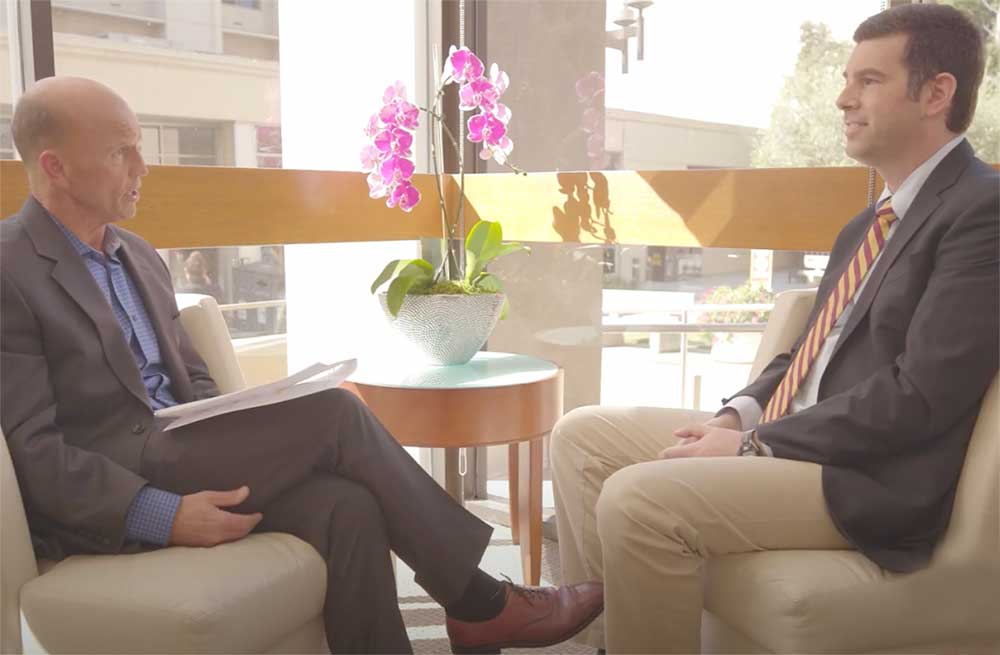
Rod Hanners, CEO of Keck Medicine of USC, talks with the director of the neurointerventional program at Keck Hospital of USC.
“Conversations with Rod” is a video series featuring Rod Hanners, CEO of Keck Medicine of USC, talking with Keck Medicine doctors about our innovative medical care and research. In this video, Hanners sat down with William Mack, MD, a neurosurgeon at Keck Medicine, to discuss new technologies and techniques in stroke care. Watch the full video below — or read excerpts from their conversation.
Interview Excerpts
What is the role of image-guided tools in stroke care?
William Mack, MD: I focus on diseases of the blood vessels of the brain. And the way we treat this has just evolved immensely in the last 10 to 15 years. We used to do principally open cerebrovascular surgery, which is taking an open approach to a pathology in the brain, whether it’s stroke or aneurysms or something like that. Now, there’s all these minimally invasive techniques where we can do our procedures through a needle stick in either the leg or the arm and thread our catheters through the blood vessels (through that needle stick) under X-ray guidance and treat these conditions. The most exciting [advancement], recently, has been in stroke treatment. We are now able to treat patients who have had large strokes. And if we get them in, in time, we’re able to remove the blood clot in the brain through these minimally invasive techniques and restore function to many of these patients.
How do minimally invasive procedures impact patient outcomes and recovery times?
WM: Patients love it because we are able to treat aneurysms or malformations in the brain, bring them in, use these [minimally invasive] procedures, and they go home the next day. And the recovery is very quick. Often times, they are back at work the next week. And this is from a life-threatening disease or pathology. And the patients are amazed. They come back to the office a week or two later and you’d never know anything happened.
What can you tell us about Keck Medicine’s rapid transfer for stroke program?
WM: This is really exciting. [In this program,] stroke treatment happens at all hours and is absolutely a team sport. We have a fantastic multidisciplinary team here at Keck Medicine. We have neurocritical care doctors, ICU doctors, stroke doctors, neurosurgeons, technicians, technologists and a nursing team, who all come in at once when the patient arrives so that there’s no delay. They work efficiently together. And this is very difficult to reproduce outside of a big [medical] center that has all these teams together. So, working with this team is what makes it great. And it’s what makes the delivery of patient outcomes even better.
Topics
